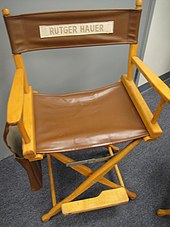
Blade Runner is a 1982 science fiction film directed by Ridley Scott from a screenplay by Hampton Fancher and David Peoples. Starring Harrison Ford, Rutger Hauer, Sean Young, and Edward James Olmos, it is an adaptation of Philip K. Dick's 1968 novel Do Androids Dream of Electric Sheep? The film is set in a dystopian future Los Angeles of 2019, in which synthetic humans known as replicants are bio-engineered by the powerful Tyrell Corporation to work on space colonies. When a fugitive group of advanced replicants led by Roy Batty (Hauer) escapes back to Earth, burnt-out cop Rick Deckard (Ford) reluctantly agrees to hunt them down.

Blade Runner 3: Replicant Night is a science fiction novel by an American writer K. W. Jeter, first published in 1996. It is a continuation of Jeter's novel Blade Runner 2: The Edge of Human, which was itself a sequel to both the film Blade Runner and the novel upon which the film was based, Philip K. Dick's Do Androids Dream of Electric Sheep?

Blade Runner 2: The Edge of Human (1995) is a science fiction novel by American writer K. W. Jeter. It is a continuation of both the film Blade Runner and the novel upon which the film was based, Philip K. Dick's Do Androids Dream of Electric Sheep?

Do Androids Dream of Electric Sheep? is a 1968 dystopian science fiction novel by American writer Philip K. Dick. It is set in a post-apocalyptic San Francisco, where Earth's life has been greatly damaged by a nuclear global war, leaving most animal species endangered or extinct. The main plot follows Rick Deckard, a bounty hunter who has to "retire" six escaped Nexus-6 model androids, while a secondary plot follows John Isidore, a man of sub-par IQ who aids the fugitive androids.

Sir Ridley Scott is an English filmmaker. He is best known for directing films in the science fiction, crime and historical drama genres. His work is known for its atmospheric and highly concentrated visual style. He ranks among the highest-grossing directors and has received many accolades, including the BAFTA Fellowship for lifetime achievement in 2018, two Primetime Emmy Awards, and a Golden Globe Award. He was knighted by Queen Elizabeth II in 2003, and appointed a Knight Grand Cross by King Charles III in 2024.
A replicant is a fictional bioengineered humanoid featured in the 1982 film Blade Runner and the 2017 sequel Blade Runner 2049 which is physically indistinguishable from an adult human and often possesses superhuman strength and intelligence. A replicant can be detected by means of the fictional Voight-Kampff test in which emotional responses are provoked; a replicant's nonverbal responses differ from those of a human. Failing the test leads to execution, which is euphemistically referred to as "retiring".

Rutger Oelsen Hauer was a Dutch actor. In 1999, he was named by the Dutch public as the Best Dutch Actor of the Century.

Blade Runner is a point-and-click adventure game developed by Westwood Studios and published by Virgin Interactive for Microsoft Windows, released in November 1997. The game is not a direct adaptation of the 1982 Ridley Scott film Blade Runner but is instead a "sidequel", telling an original story, which runs parallel to the film's plot, occasionally intersecting with it.

Soldier is a 1998 American science fiction action film directed by Paul W. S. Anderson, written by David Webb Peoples, and starring Kurt Russell, Jason Scott Lee, Jason Isaacs, Connie Nielsen, Sean Pertwee and Gary Busey. The film tells the story of a highly skilled and emotionally distant soldier who is left for dead, befriends a group of refugees, then faces his former superiors who are determined to eliminate them.

Hampton Lansden Fancher is an American actor, screenwriter, and filmmaker, who co-wrote the 1982 neo-noir science fiction film Blade Runner and its 2017 sequel Blade Runner 2049, based on the novel Do Androids Dream of Electric Sheep? by Philip K. Dick. His 1999 directorial debut, The Minus Man, won the Special Grand Prize of the Jury at the Montreal World Film Festival.

Blade Runner: Original Motion Picture Soundtrack is the soundtrack for Ridley Scott's 1982 science-fiction noir film Blade Runner, composed by Greek electronic musician Vangelis. It has received acclaim as an influential work in the history of electronic music and one of Vangelis's best works. It was nominated in 1983 for a BAFTA and Golden Globe for best original score. The score evokes the film's bleak futurism with an emotive synthesizer-based sound, drawing on the jazz scores of classic film noir as well as Middle Eastern texture and neo-classical elements.
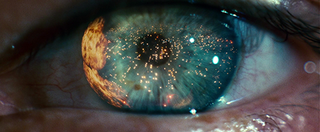
Despite the initial appearance of an action film, Blade Runner operates on an unusually rich number of dramatic levels. As with much of the cyberpunk genre, it owes a large debt to film noir, containing and exploring such conventions as the femme fatale, a Chandleresque first-person narration in the Theatrical Version, the questionable moral outlook of the hero—extended here to include even the literal humanity of the hero, as well as the usual dark and shadowy cinematography.
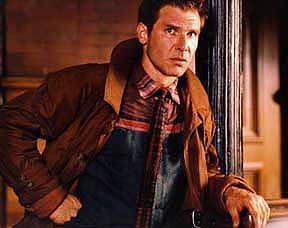
Rick Deckard is a fictional character and the protagonist of Philip K. Dick's 1968 novel Do Androids Dream of Electric Sheep?. Harrison Ford portrayed the character in the 1982 film adaptation, Blade Runner, and reprised his role in the 2017 sequel, Blade Runner 2049. James Purefoy voiced the character in the 2014 BBC Radio 4 adaptation.

Seven different versions of Ridley Scott's 1982 science fiction film Blade Runner have been shown, either to test audiences or theatrically. The best known versions are the Workprint, the US Theatrical Cut, the International Cut, the Director's Cut, and the Final Cut. These five versions are included in both the 2007 five-disc Ultimate Collectors Edition and 2012 30th-Anniversary Collector's Edition releases.

Blade Runner 2049 is a 2017 American epic neo-noir science fiction film directed by Denis Villeneuve from a screenplay by Hampton Fancher and Michael Green, based on a story by Fancher. A sequel to Blade Runner (1982), the film stars Ryan Gosling and Harrison Ford, with Ana de Armas, Sylvia Hoeks, Robin Wright, Mackenzie Davis, Dave Bautista, and Jared Leto in supporting roles. Ford and Edward James Olmos reprise their roles from the previous film as Rick Deckard and Gaff, respectively. Gosling plays K, a "blade runner" who uncovers a secret that threatens to destabilize society and the course of civilization.
Blade Runner is an American science fiction media franchise originating from the 1968 novel Do Androids Dream of Electric Sheep? by Philip K. Dick, about the character of Rick Deckard. The book has been adapted into several media, including films, comics, a stage play, and a radio serial. The first film adaptation was Blade Runner, directed by Ridley Scott in 1982. Although the film initially underperformed at the American box office, it became a cult classic, and has had a significant influence on science fiction. A novelization and a comic adaptation of the film were released in the same year. From 1995 to 2000, three novels serving as sequels to both Blade Runner and the original novel were written by K. W. Jeter, a friend of Dick's. A film sequel to Blade Runner, Blade Runner 2049, was released in 2017. To celebrate the 30th anniversary of Blade Runner in 2012, a short film was released, and in the lead up to the release of Blade Runner 2049, several more short films detailing events that occurred between 2019 and 2049 were released. The influence of the franchise has helped spawn the cyberpunk genre.
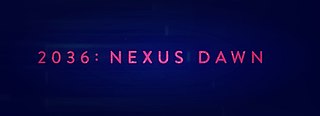
2036: Nexus Dawn is a 2017 American short film acting as a prequel to the feature film Blade Runner 2049. It is one of three such prequels, alongside Blade Runner Black Out 2022 and 2048: Nowhere to Run. The short was released on August 30, 2017, approximately five weeks before the release of the feature film, and features Jared Leto as Blade Runner 2049 character Niander Wallace, alongside Benedict Wong. The film was written by Hampton Fancher and Michael Green, who also wrote the feature film, and directed by Luke Scott, whose father Ridley Scott directed the original Blade Runner and is executive producer on the sequel Blade Runner 2049.
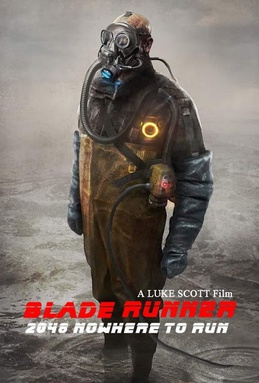
2048: Nowhere to Run is a 2017 American neo-noir science fiction short film acting as a prequel to the feature film Blade Runner 2049 and the sequel to the short film 2036: Nexus Dawn. It is one of three such prequels, alongside Blade Runner Black Out 2022 and 2036: Nexus Dawn. The short was released on September 16, 2017, approximately three weeks before the release of the feature film, and features Dave Bautista as Blade Runner 2049 character Sapper Morton, alongside Orion Ben. The film was written by Hampton Fancher and Michael Green, who also wrote the feature film, and directed by Luke Scott, whose father Ridley Scott directed the original Blade Runner and is executive producer on the sequel Blade Runner 2049.

Blade Runner 2049 – Original Motion Picture Soundtrack is the soundtrack album for the 2017 film Blade Runner 2049. Released in October 2017, the album contains music composed by Hans Zimmer and Benjamin Wallfisch, along with additional tracks by Elvis Presley, Frank Sinatra and Lauren Daigle. The soundtrack was produced by Michael Hodges, Kayla Morrison and Ashley Culp. It also includes the piece "Tears in the Rain", which was originally composed and performed by Vangelis, the composer of the original 1982 soundtrack Blade Runner.

